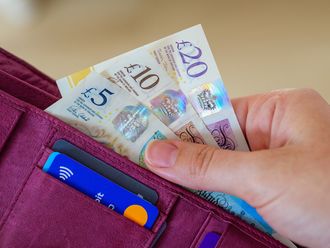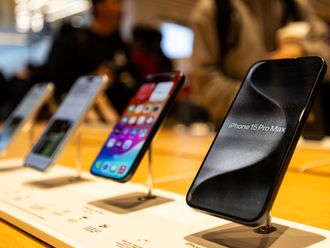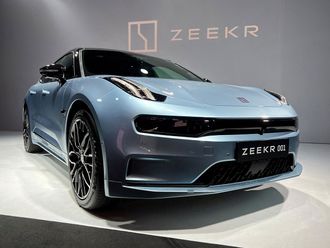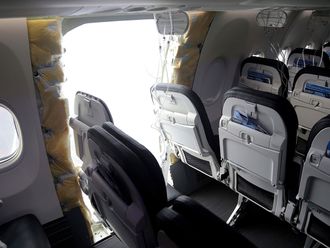Retailers court customers on social media and beckon them in-store via beacon-based geolocation-specific marketing. They splash special offers kerbside so shopping carts stay full and the aisles always get footfall. Interactive trial zones persuade consumers to shop more through touch screens. Rebates coincide with travel habits and lifestyle spends so the consumer heading for a beach holiday grabs a sunscreen en route and impulse-buys those new sunglasses at 10 per cent off.
It’s indeed an exciting time to be associated with the retail industry.
But then comes the queue. At shopping festivals and discount sales, during weekends and celebrations, it is retail rush-hour with serpentine lines full of consumers patiently (sometimes not so patiently) awaiting their turn to pay and be on their way. They want to pay and they have to wait?!
This is where the superheroes of the payments industry swoop to the rescue.
The “line-busters” or “queue busters”, as they are now being called, are innovative payment products attuned to the new retail realities. The buzz phrase is deployed at points where retail and payments converge and money actually changes hands. Our industry superheroes understand that unless progress in payments methods matches retail technology and vice versa, the virtuous circle cannot be closed.
Digital consumer conveyor belts
Retail has moved on from physical aisles to the smart device, whether it is in the consumer’s palm or at eye-level on a supermarket wall. New payments models are reciprocating with disruptive technologies that act as conveyor belts for consumers who choose, compare, buy, pay, get loyalty points and exit in one seamless sequence.
Tablets are already being used for in-aisle customer service, including payments. They bring together on a single device inventory lookup, payment, loyalty and the new acronym: KYBC, or Know Your (Best) Customer. The digital model enables the retailer to target future deals with precision, based on big data analytics.
Smartphones and wearables are the obvious future-proof platform to facilitate wide consumer acceptance of line-busting payment solutions. They are already in use for restaurant order entry and payments, for instance, ensuring curb-side delivery. Digital mobile wallets are another route to retail experience in a digital age.
Some of these changes, accelerated by mobility, will forever change the way financial institutions relate with retailers. The days are long gone when the only point of interaction between a retailer and a financial services provider was when the merchant carried bags of cash to deposit in an account at the end of a day.
Omni-channel experience
As consumers demand real-time access to inventory, multiple sales and service channels and secure transactions, we will see the physical, electronic and mobile worlds become more and more intertwined into an omnichannel experience.
This will increasingly drive merchant demand for a seamless integration of marketing, shopping, product, payment and customer service solutions.
Meet your payments superheroes
In-store mPOS: In early 2016, sports goods retailer Sun & Sand Sports teamed up with Network International to implement the region’s first mPOS solution using the Verifone E315 iOS platform at its stores in The Dubai Mall and City Centre Me’aisem.
The device, used by the friendly sales crew, has an iOS-based application that can scan bar codes, check inventory and price and carry out card payment transactions. A seamless wonder, it issues email receipts on the spot, doing away with cumbersome queuing, swiping and printing at traditional points of exit.
Anywhere, anytime mPOS: An increasing number of food outlets in Dubai have implemented mPOS to provide their customers the option of paying with a credit or debit card for food delivery at their doorstep.
Using 4G, 3G, 2G/GPRS or Wi-Fi, any device can be transformed into a payments device via the solution. Always an early adopter, the food and beverage sector works on the principle that an empowered consumer is a repeat consumer. My research team informs me that merchants using mPOS have witnessed a 20 per cent increase in sales orders.
Cash-less, card-less, device-free: Dubai Smart Government, a pioneering adopter of seamless solutions, has introduced a cashless, card-less and mobile-free payment method powered by Quisk, which is being deployed by Network International across its merchant network in the UAE in 2016.
The cloud-based Quisk solution uses mobile phone numbers and a secure PIN to create and access a digital cash account. Bypassing smart phones or mobile operator services, it can be used for physical and online payments for a wide variety of transactions including retail, government services and bills.
Self-checkout: Flat-packed furniture innovator Ikea has enabled self-checkout at its flagship store in Dubai Festival City. The tailor-made retail self-checkout is a POS solution equipped with PIN Entry Devices (PEDs) that integrate seamlessly into the store’s payment terminals.
So how easy is it to use? Consumers may very well find the DIY payment system is easier to understand and operate than IKEA’s DIY furniture guide needed to assemble the product!
Bhairav Trivedi, Group Chief Executive Officer, Network International












